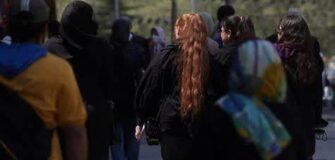Iran reaches highest number of executions in nearly a decade
Share

Washington Post | By Nilo Tabrizy | April 4, 2024
Iran — already notorious for its high rate of executions — has ramped up its use of the death penalty, according to an Amnesty International report published Thursday. Amnesty found that Iran executed 853 people in 2023, the highest number recorded since 2015, and that more than half of those executions were carried out for offenses related to Iran’s renewed war on drugs.
In one case, Hossein Ali Dil Baluch, who was 27 and a member of the Baluch minority, which is disproportionately represented in death penalty cases, was secretly executed for a drug-related offense on Oct. 19, according to the report. He was taken in the middle of the night from the public section of a prison without prior notice, despite the Revolutionary Court advising that he be referred to the Commission on Pardons and Commutations for his death sentence to be commuted to life imprisonment.
Drug trafficking is a significant issue and major clandestine industry in Iran, where narcotics including opium flow in through neighboring countries. Drug-related executions decreased in Iran between 2018 and 2020 after reforms to the Anti-Narcotics Law, which put a focus on punishing distributors. In 2021, a hard-line approach to drug-related executions returned with the election of Ebrahim Raisi as president and the appointment of Gholam Hossein Mohseni-Ejei as the head of the judiciary — both infamous for their role in previous waves of executions of those who dissented against the Islamic Republic.
In addition to drug distribution, drug possession can be punished with the death penalty for the “offense of spreading corruption on Earth,” according to Arzoo Osanloo, a professor in the University of Washington’s department of law, societies and justice.
Iran has also carried out capital punishment for anti-government protesters. As the West focuses on Iran’s sponsorship of militia groups outside its borders, the government is cracking down internally, with a rise in executions of protesters as it looks to reassert social control in the aftermath of a year-long protest movement that openly challenged the theocratic state.
Mohammad Ghobadlou was executed in January — the ninth person to be put to death in connection with the “Woman Life Freedom” protests that erupted in the fall of 2022, after the death of a young Kurdish woman, Mahsa Amini, in the custody of the country’s “morality police.”
Ghobadlou was arrested in Tehran during a demonstration in September of that year, charged with running over an official with his car and convicted of murder. He was denied access to a lawyer, was beaten in custody and his psychiatric medications were withheld to force a confession, according to Amnesty International.
The executions “serve a political purpose,” said Shahin Milani, executive director of the Iran Human Rights Documentation Center. “First, to scare the population and basically frighten them that ‘this could happened to you if you take to the streets.’ And then also to show support for the regime’s own supporters.”
At least 10 protesters have been executed in connection with the 2022 uprising, and rights groups say at least six others are at risk of the same fate as they try to navigate an opaque and often abusive justice system.
“Even after 2009, after the Green Movement, they only executed two people,” said Milani, referencing the last nationwide protest movement. “We’ve seen more executions in the aftermath of the Mahsa Amini protests … and that’s a very alarming pattern.”
In June 2022, months before unrest swept the country, Supreme Leader Ali Khamenei gave a speech that seemed to forecast the crackdown.
“In the 1980s, we could stand in front of many difficulties and the attacks from our enemies on our own feet and overcome them,” Khamenei said. “We can still do it today. The God of the 1980s is still the same God of this year,” he concluded — referring darkly to a decade when as many as 20,000 political dissidents were disappeared, or were executed or tortured to death by the nascent Islamic revolutionary government.
Raisi, widely seen as Khamenei’s choice to run the country, made his career in the Iranian judiciary. He became known as the “hanging judge,” and was a member of the “death committee” that sentenced thousands to death in the summer of 1988.
A spokesman for Iran’s mission to the United Nations in New York declined to comment.
Families of protesters or alleged drug offenders put to death in recent months declined to speak with The Washington Post. Some have been intimidated into silence by the state, rights groups have said.
But Shole Pakravan, whose daughter Reyhaneh Jabbari was executed in 2014, said: “For years, I would open the newspapers and read the news about someone who was executed: ‘Today, four people were executed. Today, 10 people were executed.’ For me, it was just a word. I didn’t understand its meaning at all.”
In a case that Amnesty condemned as “deeply flawed,” Jabbari, then 19, stabbed an IRGC man in what she said was self-defense to stop him from sexually assaulting her. Iranian authorities charged her with plotting to kill him and convicted her of murder in 2007. After languishing for seven years in prison, she was hanged in 2014, despite international outcries from the United Nations and human rights groups.
“A convict dies in two minutes after they put a rope around their neck. But the families are eternally punished and they remain in that stress, in that heartbreak,” her mother said.
